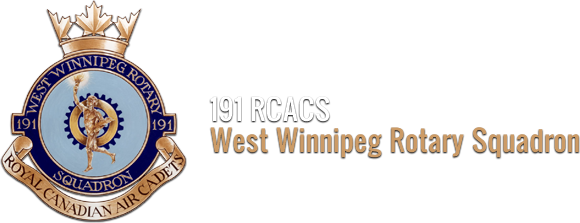Placement Of Badges & Insignia
Shoulder Badge (Shoulder Flash)
The shoulder badge is worn on both sleeves of the tunic only. The top of the badge is to be 2 cm below the shoulder seam.
Placement of the should flashes can be found on the following links: Left Sleeve and Right Sleeve.
Cap Badge
Your cap badge is worn on the left side of the wedge. The centre of the badge is positioned half-way between the front
and middle of the wedge and it is centred between the top and bottom of the wedge.
Rank Badges
Your ranks belong half-way between the shoulder seam and elbow on both sleeves of the tunic. When you are promoted you replace your current rank with the new rank in the same way. LAC, Corporal, Flight Corporal, Sergeant and Flight Sergeant badges are all placed this way as seen at the following links. Left Sleeve and Right Sleeve.
Warrant officer ranks are placed slightly differently and can be found at the following links: Left Sleeve – Warrants and Right Sleeve – Warrants.
Level Proficiency Badge
Your level proficiency badge is centred on the left sleeve of the tunic. The bottom edge of the badge should be flush with the cuff top of the cuff unless fitness, marksmanship or glider pilot familiarization badges are worn, then the proficiency level badge will be placed 1.0 cm above these. You only wear the highest level proficiency badge you have received. This can be seen at the following image: Left Sleeve
Name Tag
If you have a name tag it is worn centred just above the flap of the right breast pocket of the tunic. This placement of the name tag varies slightly if you have medals. The placement of the name tag can be seen at the following link: Right Breast Pocket.
First Aid Badge
If you have Emergency or Standard First Aid qualifications, your badges should be centred on the right sleeve, 1.0 cm from the bottom of the sleeve, or 1.0 cm above summer course qualification badges if worn. This can be seen at the following link: Right Sleeve. If you are a warrant officer, the first aid badge is worn higher up as seen as the following link: Right Sleeve – Warrants.
Marksmanship, Fitness and Glider Familiarization Badges
Summer Camp Badges
The latest Dress Regulations are available HERE. Have a read through and make sure that your complying with them. The care and custody of all items of clothing issued are the responsibility of individual cadets and their parents or guardians during the cadet’s service with the organization.
The dress and appearance of air cadets in uniform shall, on all occasions, be such to reflect credit to their unit and the Royal Canadian Air Cadets. The uniform is to be worn only when attending authorized parades or activities. When cadets appear in uniform in public, it is their duty to be sure that their uniforms are properly maintained and correctly worn.
In early wars, during the heat of battle, the fighting men could not recognize each other and often fought their own friends. In those days, people wore whatever they pleased and no one knew by sight alone who was friend and who was foe. Clever generals dressed their men all the same, or in a “uniform dress,” and scored many victories before this new development in warfare became widely known. The story of the origin of the Air Force Blue uniform is interesting.
At one time, England was a major supplier of uniforms and the materiel for them. At the time of the October Revolution in Russia, there was a large quantity of clothing in England that was originally ordered for the old Russian Army. The cloth remained unused until at the end of the First World War, the Royal Air Force (RAF) came into existence and required uniforms. The result was that the RAF and original Royal Canadian Air Force (RCAF) uniforms were the same colour as the old Tsarist Russian uniform.
The original cadet uniform was also blue. In 1968 the Army, Navy and Air Force unified into the Canadian Armed Forces. At that time the Canadian Forces adopted a single green uniform that remained for almost 20 years. In 1994, the Air Cadet uniform changed once again to the present traditional air force blue style.
Cadet Ranks
Cadets are eligible for promotion in rank IAW (in accordance with) regulations outlined in CATO 13-02 (Merit-Based Cadet Rank Promotions). National pre-requisites for promotion to each rank are outlined in CATO 13-02 and are listed below.
All cadets are referred to by their rank and last name. Cadet Warrant Officers are referred to as ma’am or sir.
Only the Air Cadet ranks are listed below. Officers at the Squadron are members of the Canadian Armed Forces (CAF), and use Royal Canadian Air Force officer ranks. All Canadian Armed Forces ranks can be found here. All CAF officers are referred to as ma’am or sir, and those above the rank of Officer Cadet are saluted.
Air Cadet (Cdt)
No insignia
This is the rank that you have upon enrolment.
Cadet Leading Air Cadet (LAC)
![]()
(1) participate in the first year of the Air Cadet Proficiency Level Training Program for a minimum period of five months, and
(2) be recommended by the appropriate level officer.
Cadet Corporal (Cpl)
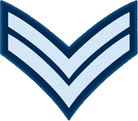
(1) hold the rank of LAC,
(2) successfully complete year one of the Air Cadet Proficiency Level Training Program,
(3) be recommended by the appropriate level officer, and
(4) having participated in the Cadet Fitness Assessment as part of Personal Fitness and Healthy Living.
Cadet Flight Corporal (FCpl)
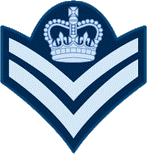
(1) completed at least six months of service at the rank of Cpl,
(2) have successfully completed the second year of the Air Cadet Proficiency Level Training Program,
(3) be recommended by the appropriate level officer, and
(4) having participated in the Fitness Assessment as part of Personal Fitness and Healthy Living.
Cadet Sergeant (Sgt)
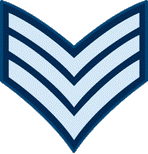
(1) completed at least six months service at the rank of FCpl,
(2) have successfully completed the third year of the Air Cadet Proficiency Level Training Program,
(3) be recommended by the appropriate level officer,
(4) having participated in the Fitness Assessment as part of Personal Fitness and Healthy Living, and
(5) achieved a minimum of “Completed Without Difficulty” in PO 303 Leadership.
Cadet Flight Sergeant (FSgt)
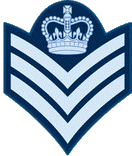
(1) completed at least six months service at the rank of Sgt,
(2) have successfully completed the fourth year of the Air Cadet Proficiency Level Training Program,
(3) be recommended by the appropriate level officer,
(4) having participated in the Fitness Assessment as part of Personal Fitness and Healthy Living, and
(5) achieved a minimum of “Completed Without Difficulty” in PO 403 Leadership.
Cadet Warrant Officer Second Class (WO2)
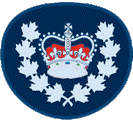
(1) completed at least six months service at the substantive rank of FSgt, and
(2) be identified as a successful candidate through the merit review board process (IAW CATO 13-02 Anx B),
(3) be recommended by the appropriate level officer,
(4) having participated in the Fitness Assessment as part of Personal Fitness and Healthy Living, and
(5) achieved a minimum of “Completed Without Difficulty” in PO 503 Leadership.
Cadet Warrant Officer First Class (WO1)
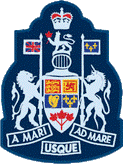
(1) completed at least six months service at the substantive rank of WO2,
(2) be identified as a successful candidate through the merit review board process (IAW CATO 13-02 Anx B), and
(3) be recommended by the appropriate level officer.
Recommendation by level officer
The CATO also stipulates that all cadets must be recommended for promotion by the appropriate “flight commander”, with the “flight commander” position being designated as an Officer position. The criteria for recommendation is described in CATO 13-02, and is listed below:
- Additional leadership attributes that the Div O / Pl Comd / Flt Comd (corps/sqn) needs to consider when recommending whether or not a cadet should be promoted include:
- dress and deportment;
- conduct, discipline, and attitude;
- participation;
- response to direction;
- ability to interact positively and comfortably with others;
- ability to make sound judgements regarding their own actions;
- willingness to accept responsibility;
- ability to solve problems effectively;
- ability to communicate effectively;
- ability to set a positive example for others; and
- initiative.
Care & Wearing Of The Uniform
You shall only wear your uniform when:
a. you are attending training or proceeding to or from the place where you train; or
b. you are attending ceremonies or functions at which the wearing of the uniform is appropriate and authorized.
The following paragraphs give you some regulations and hints about how to wear your uniform.
Wedge Cap
You wear your wedge on the right side of your head. The lower point of the front crease of the wedge is to be in the centre of your forehead. The front edge of the cap is to be 2.5 cm (1 in.) above your right eyebrow. If you remember that the bird on the cap badge should look toward the sky, you will always have the cap on the right side of your head. To be sure the cap is 2.5 cm (1 in.) above the right eyebrow, you can use the measurement of the width of two fingers. If your hair hangs down on your forehead you should be sure to tuck it under your wedge when in uniform.
When you are outside you will always keep your head-dress on, even when you are seated. You will also keep your head-dress on in a mall or store unless you are seated. Remove your head-dress in a restaurant or church.
Turban
If you are a member of the Sikh religion you may wear a turban and associated personal items. The turban will be air force blue. The hat badge is centered midway on the front of the turban.
Tunic
When wearing the tunic you shall always keep all pockets buttoned. Be sure all front buttons (except the top) are also
fastened. You should keep your tunic well pressed. The sleeves of the jacket shall be roll-pressed with no creases. Be sure your belt is even with no twists. The black buckle of your tunic belt is to be centered. The pockets of your tunic should not bulge. The following are links for badge placement on the tunic:
- Left Sleeve
- Right Sleeve
- Left Sleeve – Warrants
- Right Sleeve – Warrants
- Right Breast Pocket
- Left Breast Pocket
Trousers/Slacks
Your trousers/slacks should be well pressed. Creases should be sharp. Creases in male pants go up the front centre of each leg and extend to the waist, inside the first belt-loops. Creases in female slacks go up the front centre of each leg and extend to the corner of the pocket. Rear creases extend up the centre of the pant leg and meet in the back at the waistband, forming a “V.” Your trousers/slacks should reach the point where the creases will be slightly broken on the top of the boots. Males trousers are held up by a belt.
Note – When ironing your pants and tunic you should use a pressing cloth. A pressing cloth may be a towel, pillowcase or other piece of cloth. Some people also use an open brown paper bag. The pressing cloth will prevent your tunic and pants from becoming shiny due to ironing. You should also use a pressing cloth when ironing your wedge and necktie. The creases in your trousers/slacks sharpen with the use of a moist pressing cloth or by wetting the crease itself.
Shirt
Your shirt should be neatly pressed when worn. The only crease in the shirt should be down the centre of each arm beginning at the centre of each epaulette. It may be helpful to starch the collar of the shirt to prevent it from becoming limp.
Necktie
Your necktie should be ironed and tidy. The knot should be compact and the tie done up to the collar when worn.
T-Shirt (Light Blue)
The light blue T-shirt is worn at summer camp. You will keep your T-shirt well pressed with creases down the centre of each arm beginning at the shoulder seam.
Turtleneck
You will wear your turtleneck during the winter. It is worn with the neck band neatly folded down. The turtleneck is ironed with no creases.
Socks
You will wear the grey wool socks that are issued to you by your squadron. If you are allergic to the material in the socks, you may wear other socks made of a suitable material and colour. Another option is to place sports socks under your issue grey socks.
Overcoat
Your overcoat may be worn when the weather is appropriate. You may turn up and button the collar in severe weather. No rank Insignia or other badges are to be worn on the overcoat. Your overcoat is to be kept buttoned whenever it is worn.
Boots
Your black issue boots are laced straight across.
Your Uniform is Government Property
When you joined cadets your parents signed your enrolment form. By signing the enrolment form your parents have taken responsibility for all parts of your uniform. As a result, you are always responsible for all parts of your uniform. You should follow these rules:
- Do not leave your uniform lying around.
- Mark your name in every piece of your uniform.
- Return damaged or poorly fitting parts of your uniform to your squadron supply and get new parts.
- Be sure that any parts of your uniform that you return are signed off when you return them. You have a right to insist on this, even to an officer or senior cadet.
- You must return your uniform promptly if you leave the squadron.
Deportment
When you are in uniform you should present a good appearance. Chewing gum, slouching, hands in pockets, walking arm in arm, and similar actions do not look good for a cadet in uniform. The way you behave in uniform will affect what people think of all cadets. The pride you show in your uniform is a reflection of the pride you have in yourself and your squadron.
Make-up – Females
When you are wearing your uniform, you shall wear a limited amount of make-up. You cannot wear false eyelashes, heavy eyeliner brightly coloured eye shadow or coloured nail polish.
Jewellery
You shall not wear jewellery when you are in uniform, except wrist watches, ID or Medic Alert bracelets. You can also wear rings as long as they are not costume jewellery. Female cadets may wear plain gold stud earrings in pierced ears. The ear-rings shall be round and not more than 7 mm (1/4 in.) in diameter. (Male cadets are not permitted to wear ear-rings.) You cannot wear other types of ear-rings, but you may wear sleepers while your ears are healing after piercing. Only one pair of ear-rings/sleepers may be worn at a time.
